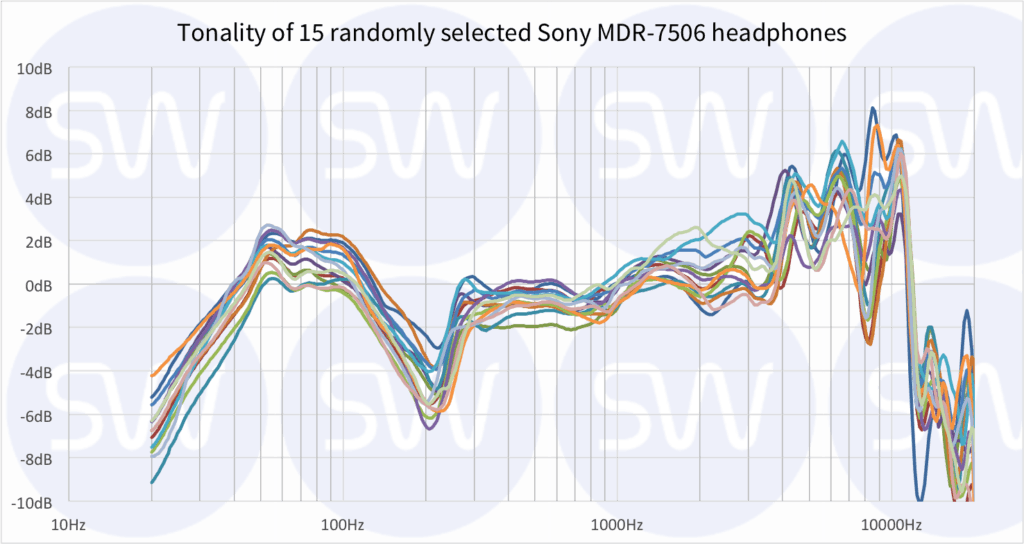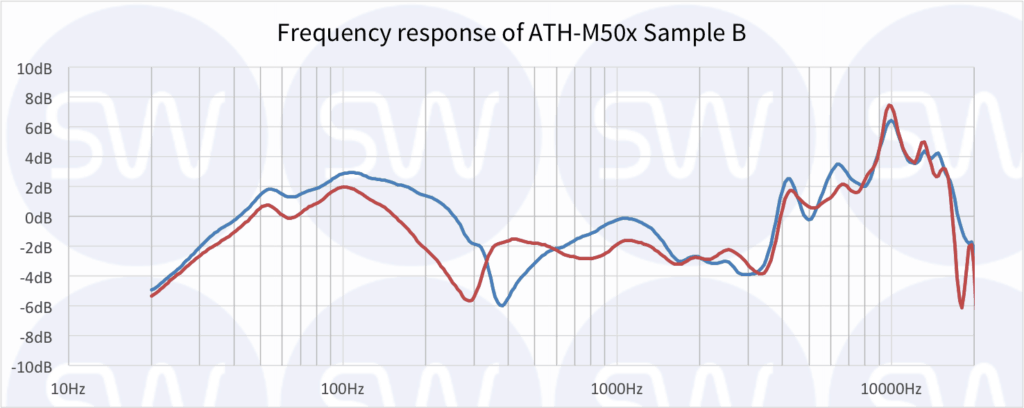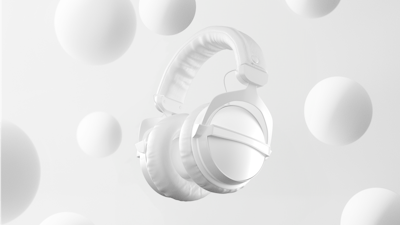Here at Sonarworks we measure headphones. A lot of them. So far we’ve measured more than 1100 pairs of headphones! This might just be the highest number of measurements any non-manufacturer company has done. And what’s more interesting – we have measured dozens of headphones from the same model. Therefore we know a few things no other company is able or willing to tell you!
Every Set of Cans is Special
So, first of all the obvious – headphones have a sample to sample variance. It’s a fact of life with any type of equipment. If you want the variance to go away, the manufacturer of your headphones would need to throw away drivers that fall out of spec and cherrypick drivers so they at least match each other. Needless to say – if they have to bin 10 drivers, before your cans take shape, you’re paying for 12 drivers even if you need only 2.
Let’s take a look at 15 Sony MDR-7506 left channel measurements. I don’t think that any other company has shown this type of comparison so far.

Even if you’re using our average calibration, the accuracy, as you can tell, is at the mercy of Lady Luck! It will be better no doubt, however it can be up to 3dB off if you left your lucky pair of sneakers at home while shopping for a set of cans. You will be able to churn out excellent mixes with them, but that extra magic will be left to chance.
Hearing Double
So, headphones are different, but there’s more! Sadly some cans also have channel to channel differences both in overall sensitivity and in frequency response. Interestingly enough it’s most prominent in closed back headphones with a single entry cable. Looks like some manufacturers haven’t thought through how cable sockets change earcup inner volume.
A good example is the crowd favourite Audio-Technica ATH-M50x.

You will hear this as instruments shifting around, depending on what notes they’re hitting. What’s more – many instruments can become disjointed as their higher frequency components stay in place while body goes sideways. I pity the poor guy trying to doctor a mix while in reality he’s chasing ghosts. Fortunately the newer ATH-M70x shows a lot less channel variance.
What Now?
Consistency or lack thereof is something we have to live with in all kinds of equipment. The obvious (and laziest) recommendation would be to just buy better headphones. There are cases where higher up the product line a manufacturer would just use the same driver, earcup with only tighter quality control being the improvement.
A smarter tip is to choose open back headphones that suffer less from enclosure induced channel imbalance. Also usually the well known manufacturers have firmly established production lines that produce consistently performing drivers. If only they knew how to voice the final product!
Next time we’ll tell you how Sonarworks tackles this problem digitally. And it doesn’t involve buying more expensive headphones!



